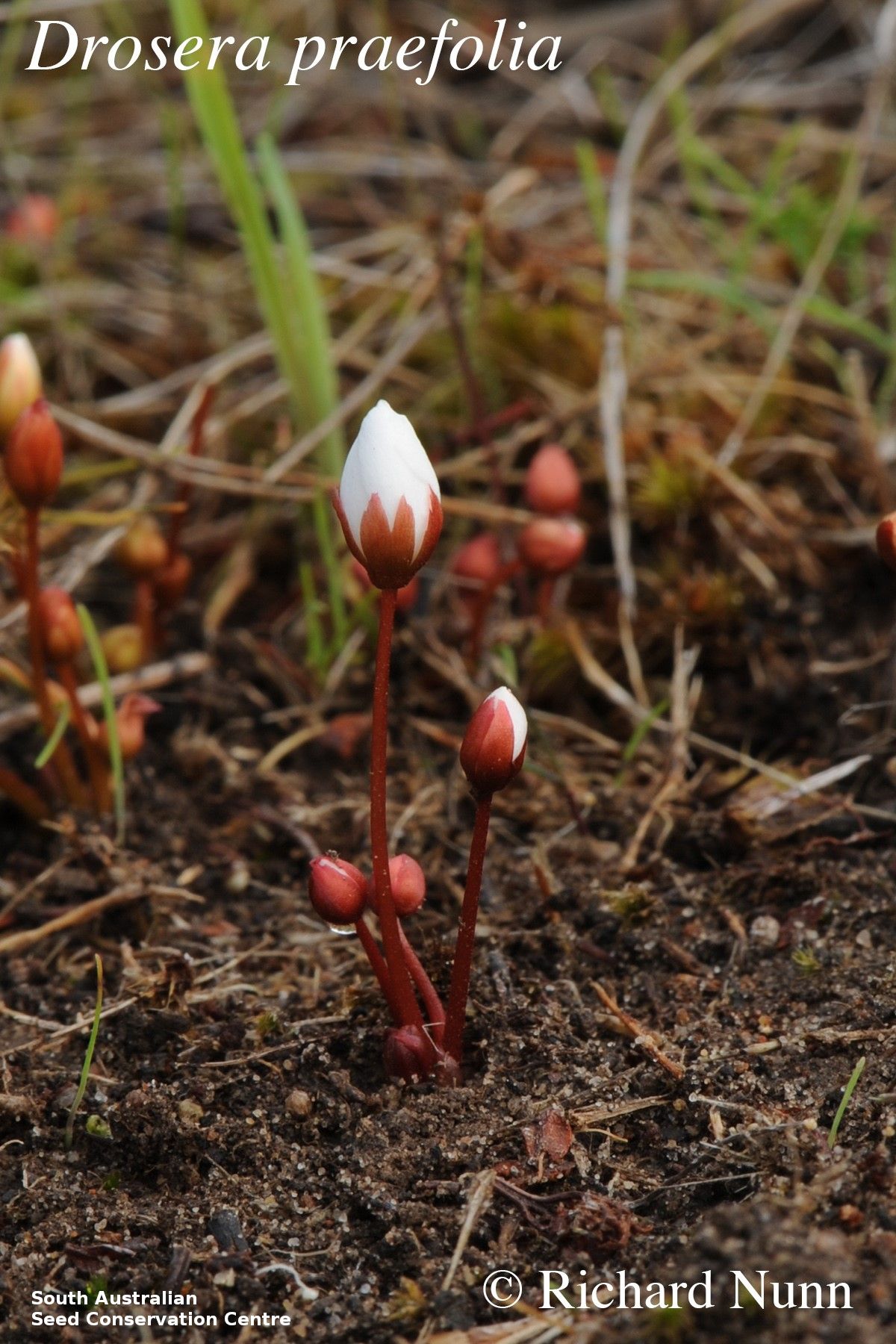

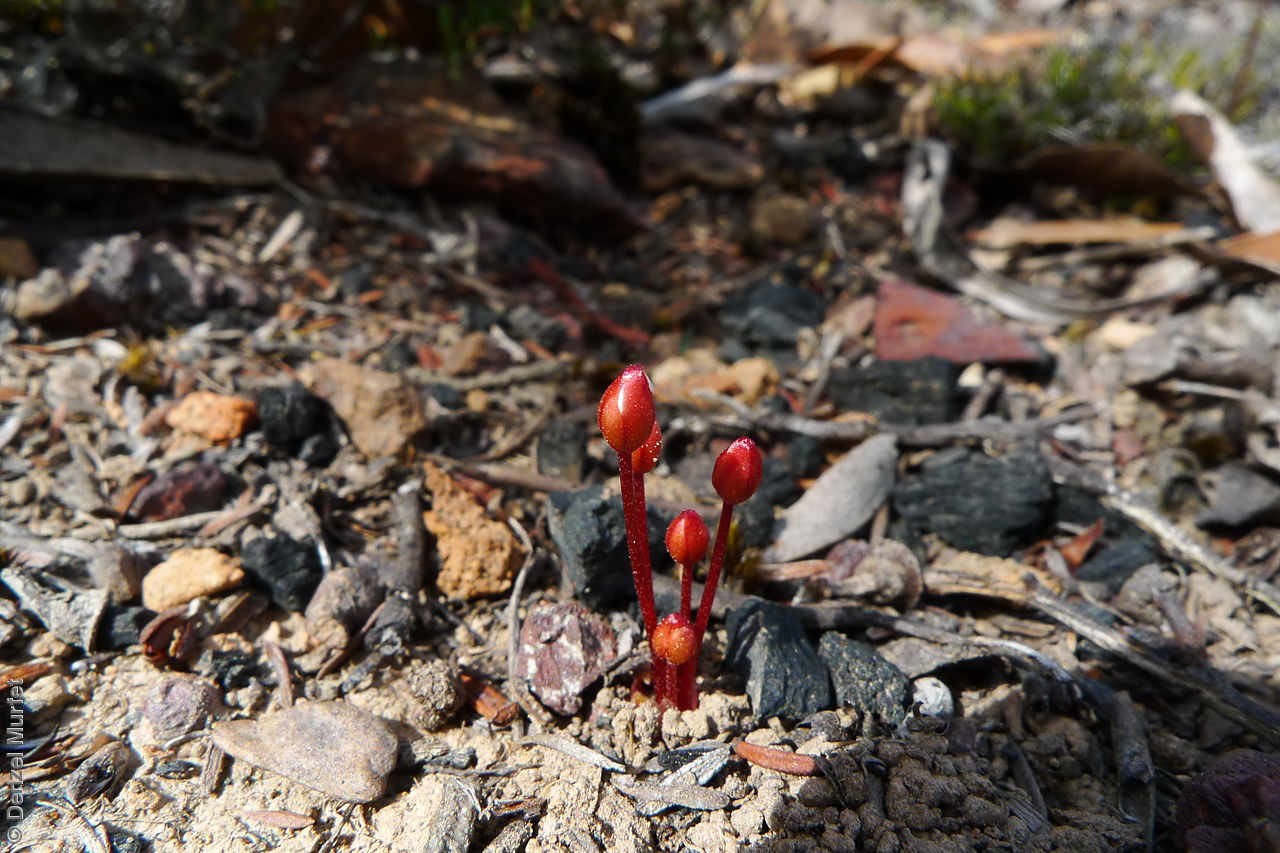
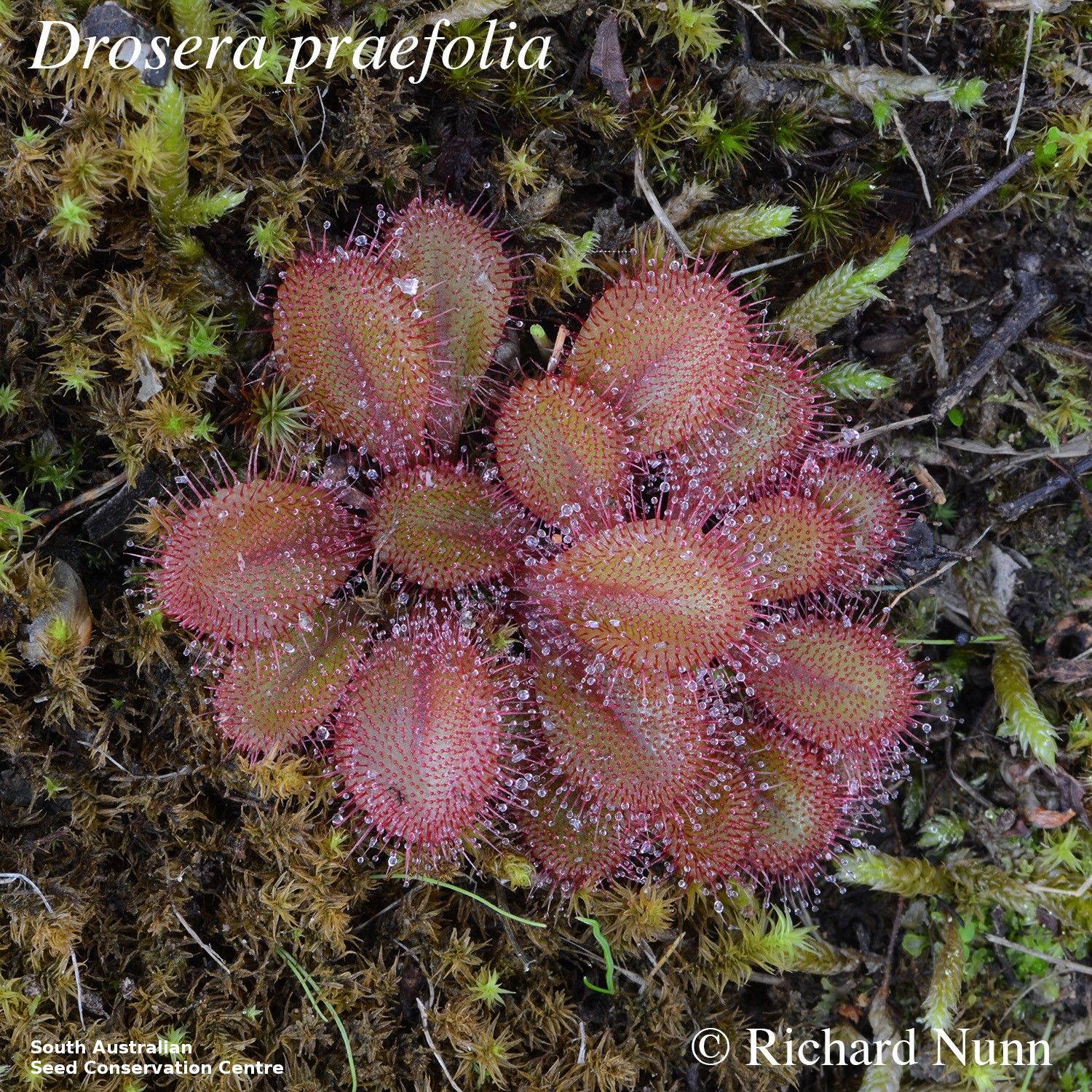
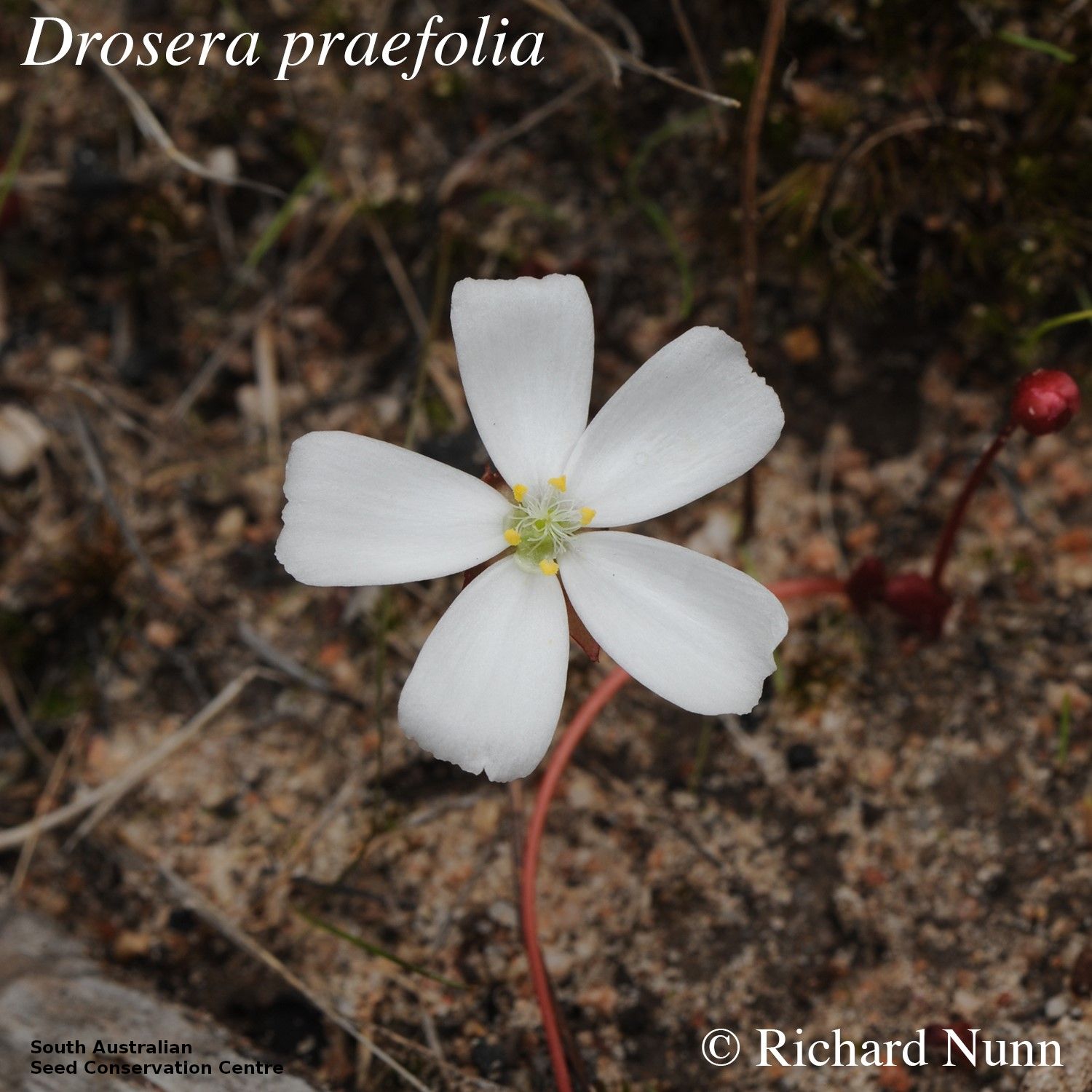
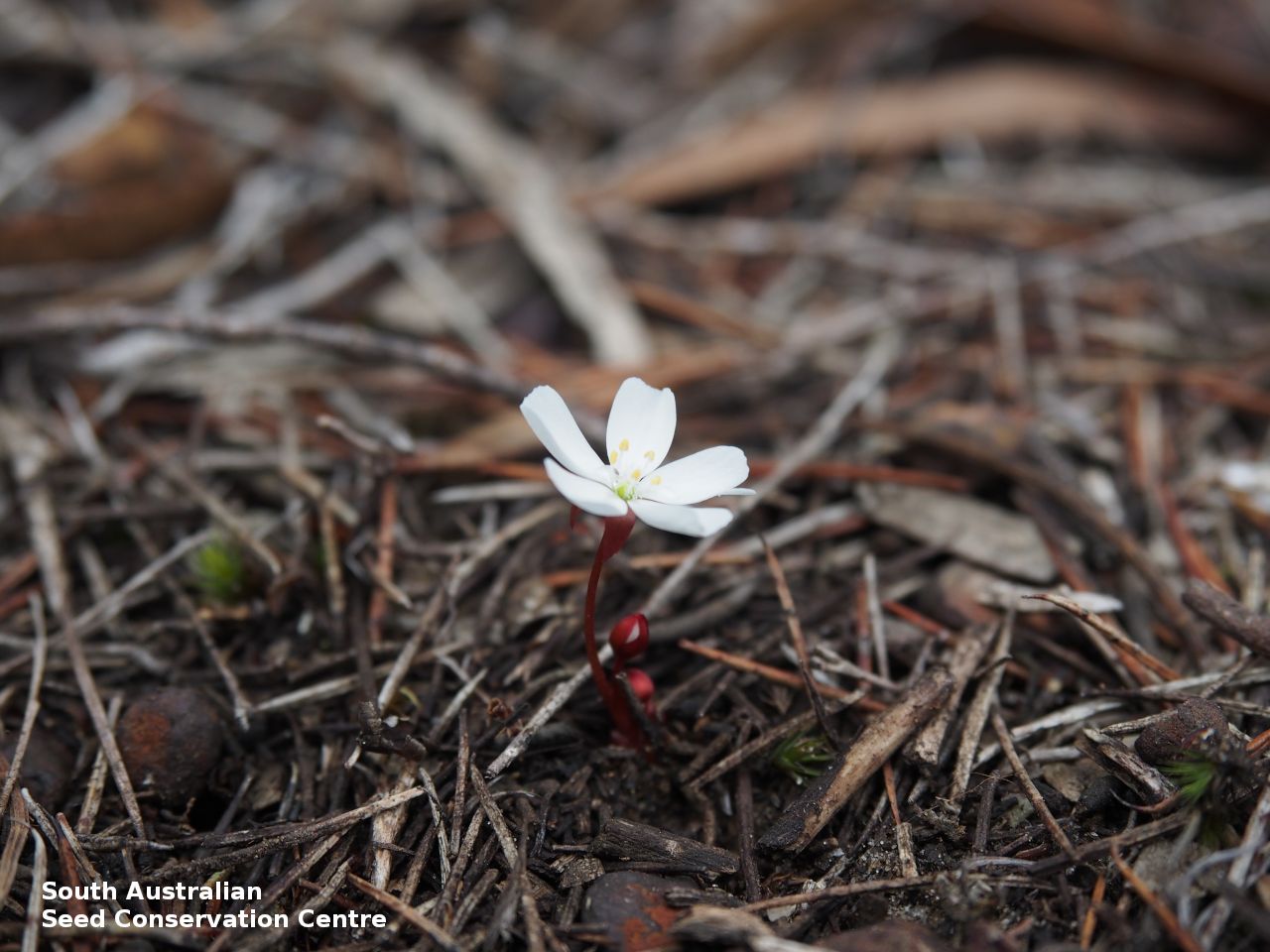
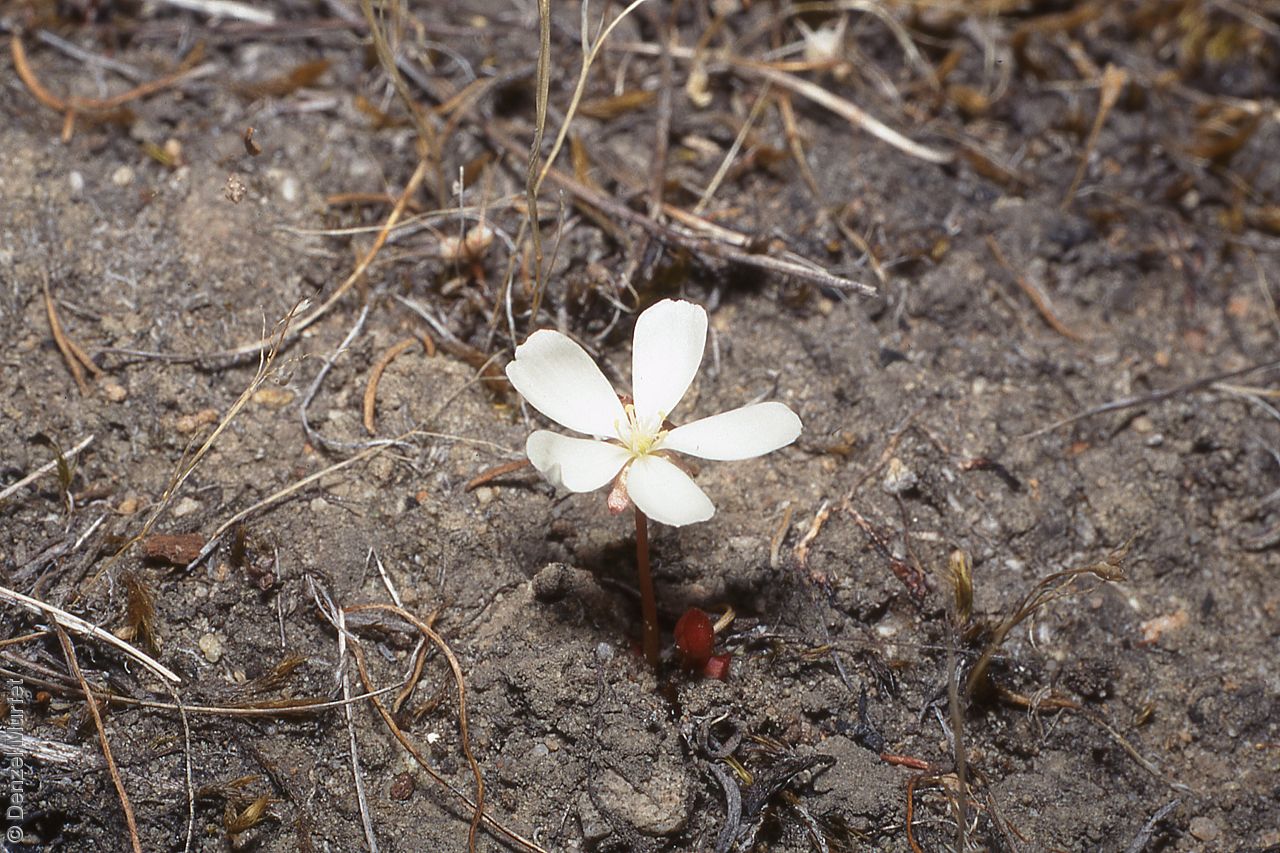
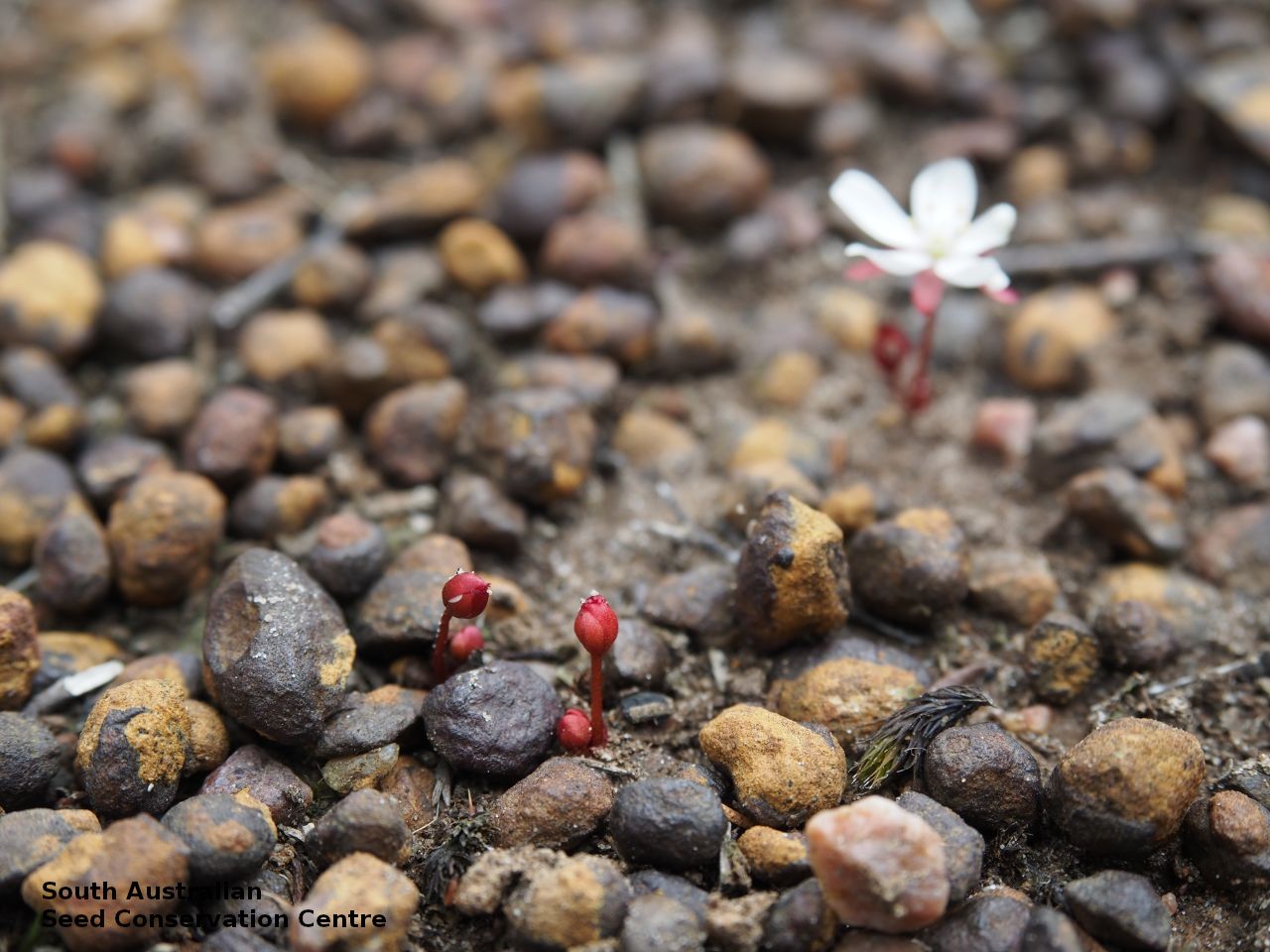
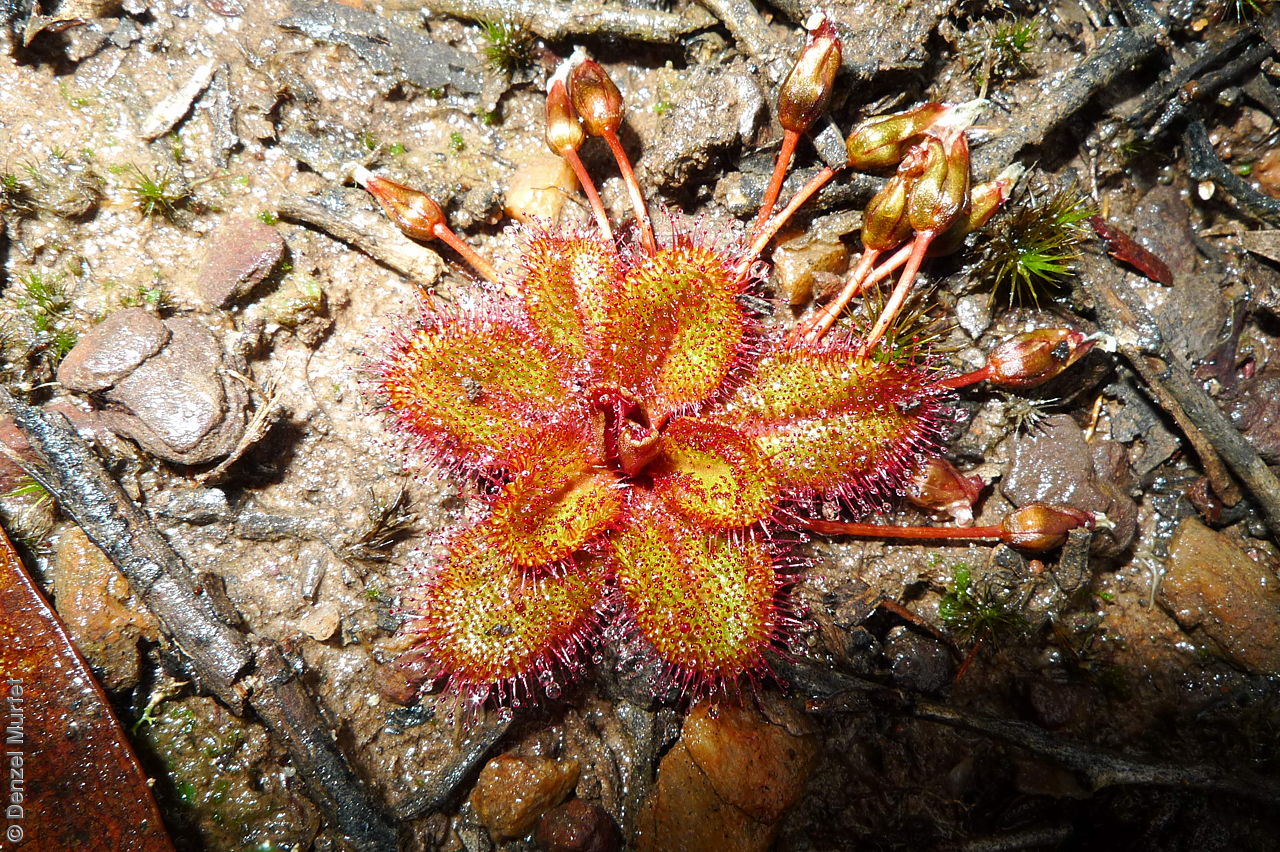
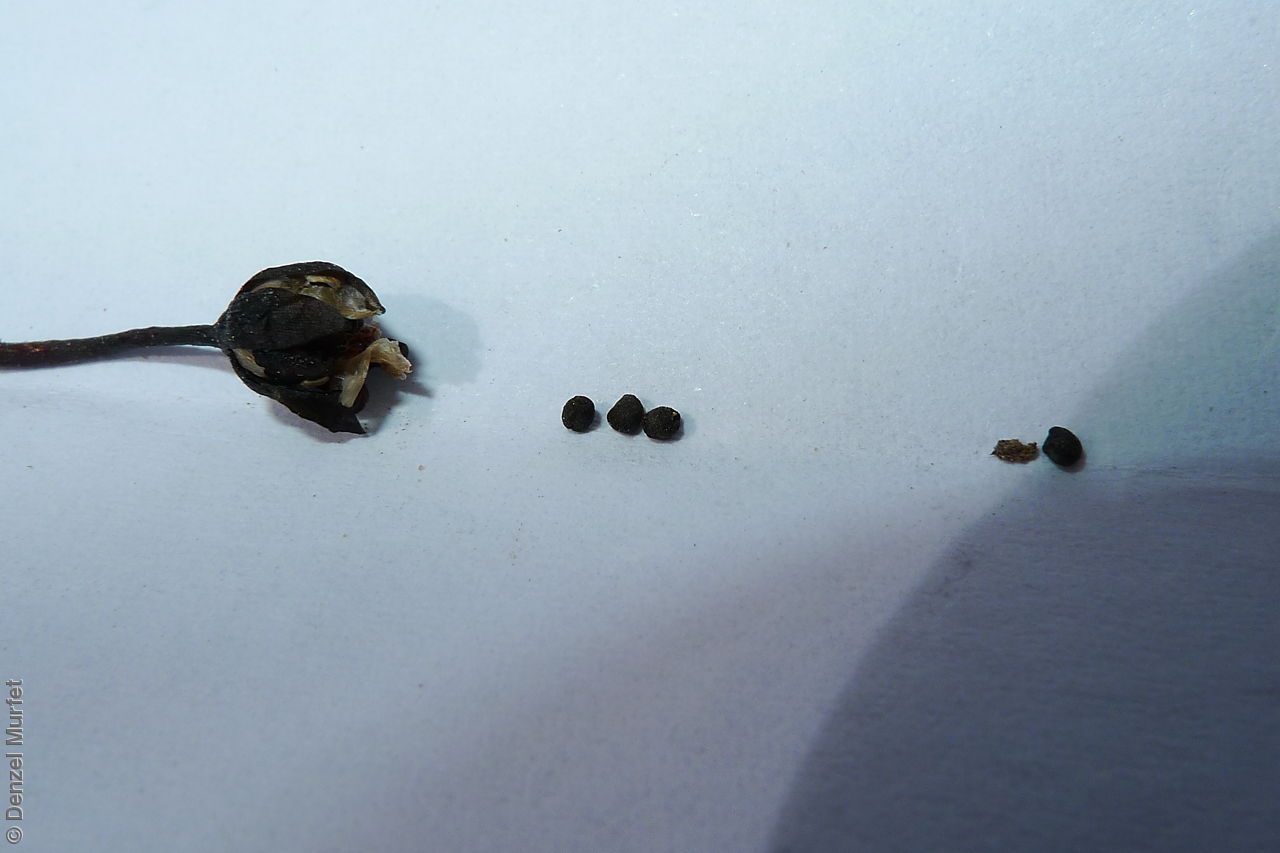
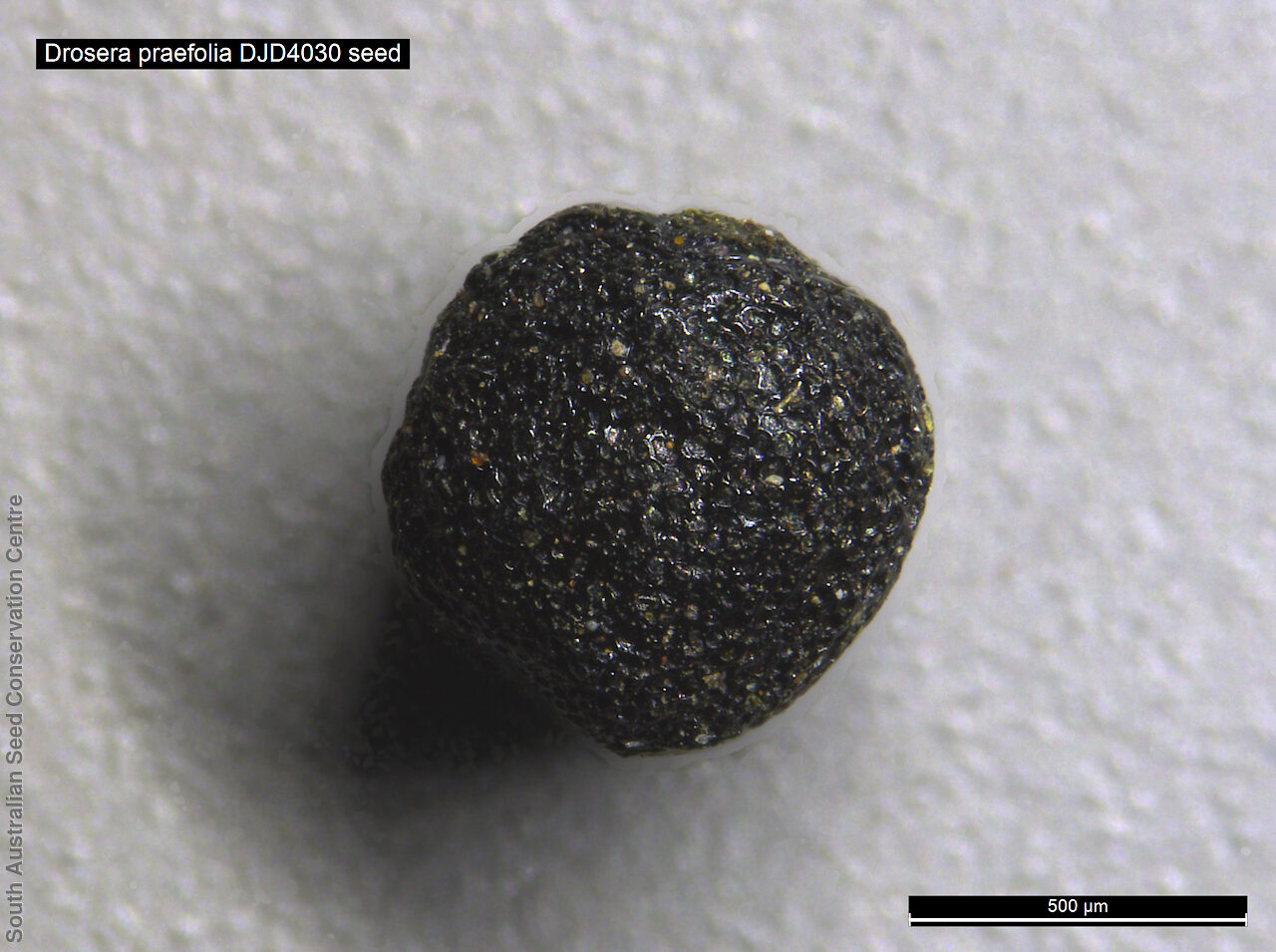
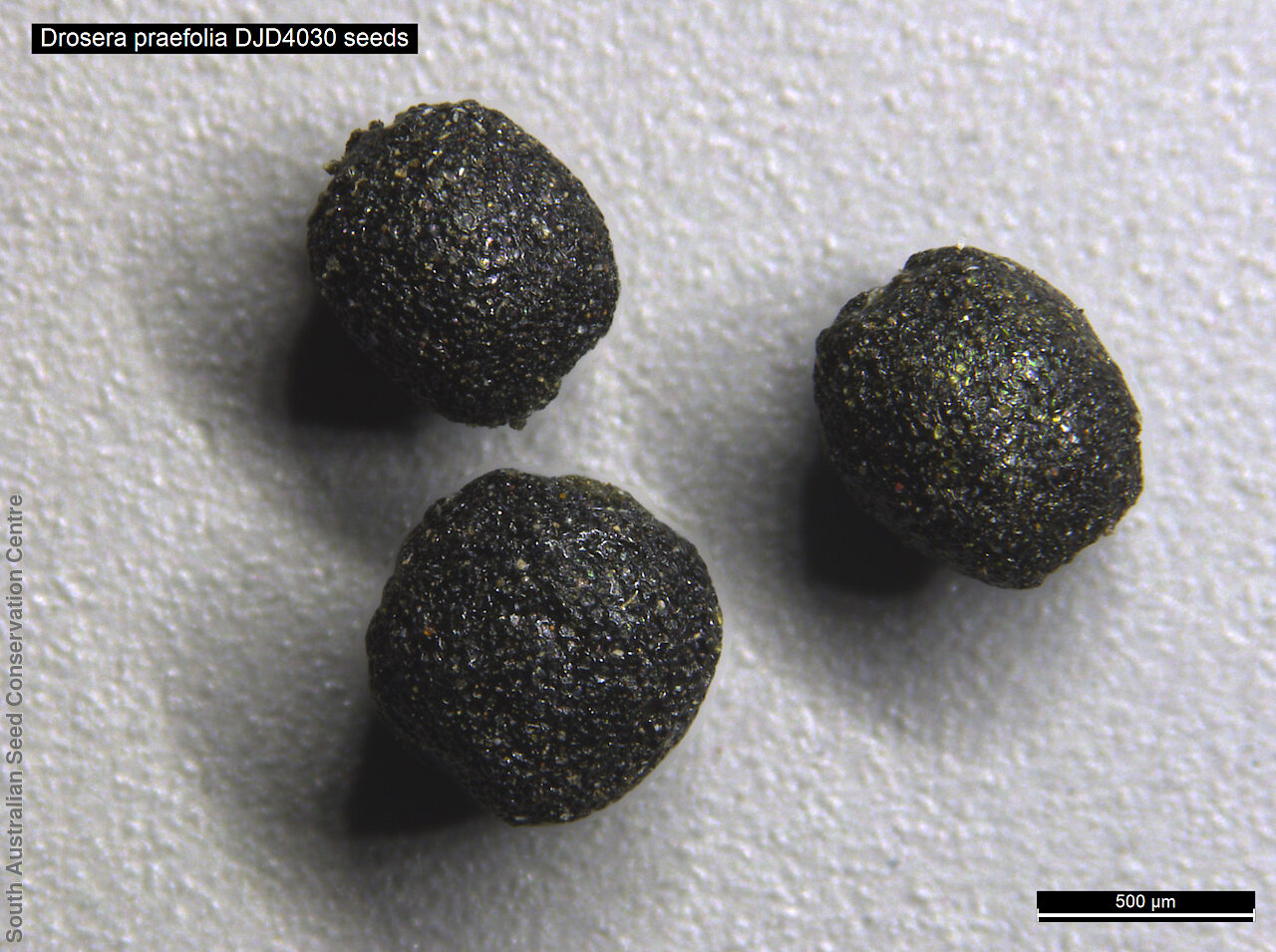
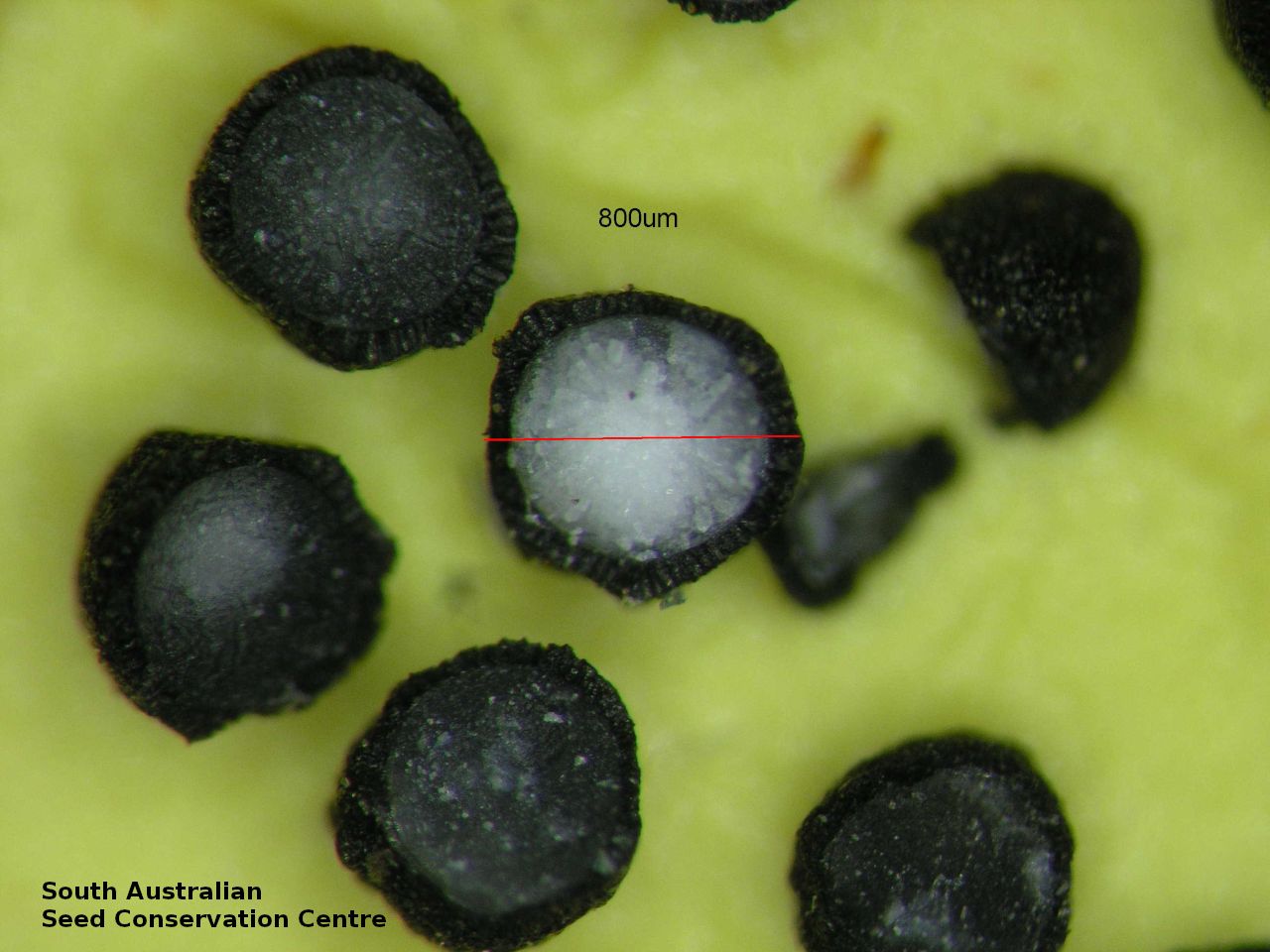


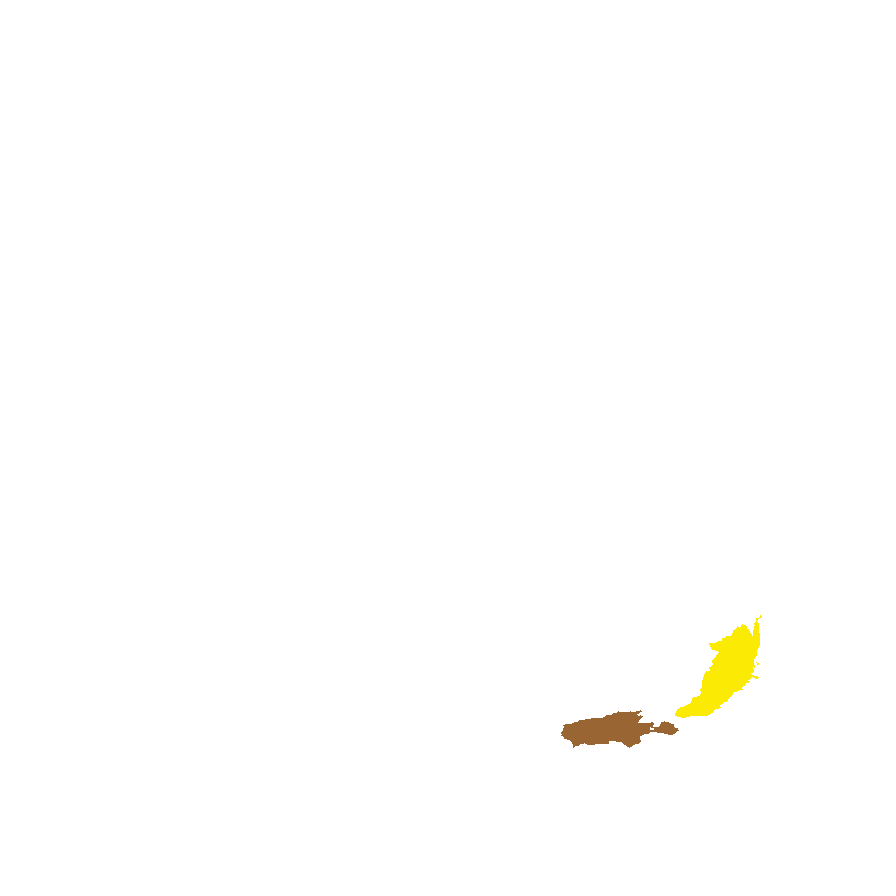
Prior names
Drosera whittakeri ssp. praefolia
Drosera aphylla, nom.illeg.
Drosera bulbosa var. praefolia
Drosera whittakeri var. praefolia
Etymology
Drosera from the Greek 'droseros' meaning dewy, alluding to the glistening glandular hairs of the leaf laminae. Praefolia from the Latin 'prae' meaning before and 'folium' meaning leaf, alluding to the fact that the flowers appear on a terminal inflorescence before the leaves.
Distribution and status
Endemic to South Australia and found on Kangaroo Island and the southern Mount Lofty Ranges, growing on lateritic clay-sand, loam or decomposed shale soils in exposed, dry sites or open woodland. Native. Rare in South Australia.
Herbarium regions: Southern Lofty, Kangaroo Island, Green Adelaide
NRM regions: Adelaide and Mount Lofty Ranges, Kangaroo Island
AVH map: SA distribution map (external link)
Plant description
Small green (or red in full sun) annual herb with a leafy rosette to 6 cm across. Leaves appressed to soil surface, green or red, obovate to 16 mm long and 12 mm wide, margins involute when young. Inflorescence emerging before rosette, with 1 to10 white flowers, decumbent underneath the rosette foliage in fruit. Sepals to 5 mm long and 1.5 mm wide, petals cuneate, truncate to shallowly notched to 8 mm by 4 mm. Flowering between April and May. Fruits are red-brown (black when dried) ovoid to globose capsule to 8 mm diameter. Seeds black, ovoid to 1 mm long and 0.8 mm wide, with a mesh-like surface.
Seed collection and propagation
Collect seeds between May and July. Collect mature capsules, those that are fat, hard, turning black and contain black seeds inside. Place the capsules in a tray and leave to dry for one to two weeks. Then rub the capsules gently by hand to dislodge the seeds. Use a sieve to separate the unwanted material. Store the seeds with a desiccant such as dried silica beads or dry rice, in an air tight container in a cool and dry place.
Fire response
Mainly re-sprouting from bulbs with very few tiny seedlings observed in the fire scar. Seedlings distinguishable by small basal leaves which are not produced in re-emergent plants until after flowering.
Longevity: >10 years
Time to flowering: 1 year from re-sprouting bulbs
Recovery work
In 2020-2021 this species was assessed post-fire in April 2021 when this species flowers. Seeds were collected from three populations on Kangaroo Island in 2021 with a total of 6000 seeds banked in long term storage. Germination screening testing the response to fire cues is being undertaken in 2021.This project was supported by the Emergency Seed Collecting Fund, a grant awarded to the Australian Seed Bank Partnership by the Royal Botanic Gardens, Kew on behalf of the UK Government.
| Location | No. of seeds (weight grams) | Number of plants | Date collected | Collection number Collection location | Date stored | % Viability | Storage temperature |
|---|---|---|---|---|---|---|---|
| MSB | 1,900 (0.36 g) | 100+ | 19-Jun-2006 | DJD488 Southern Lofty | |||
| BGA | 2,660 (0.437 g) | 100+ | 16-Jun-2021 | DJD4030 Kangaroo Island | 7-Jul-2022 | 100% | -18°C |
| BGA | 2,400 (0.433 g) | 50+ | 15-Jun-2021 | JRG811 Kangaroo Island | 7-Jul-2022 | 100% | -18°C |
| BGA | 1,000 (0.219 g) | 50+ | 16-Jun-2021 | JRG799 Kangaroo Island | 7-Jul-2022 | 100% | -18°C |
Number of plants: This is the number of plants from which the seeds were collected.
Collection location: The Herbarium of South Australia's region name.
% Viability: Percentage of filled healthy seeds determined by a cut test or x-ray.